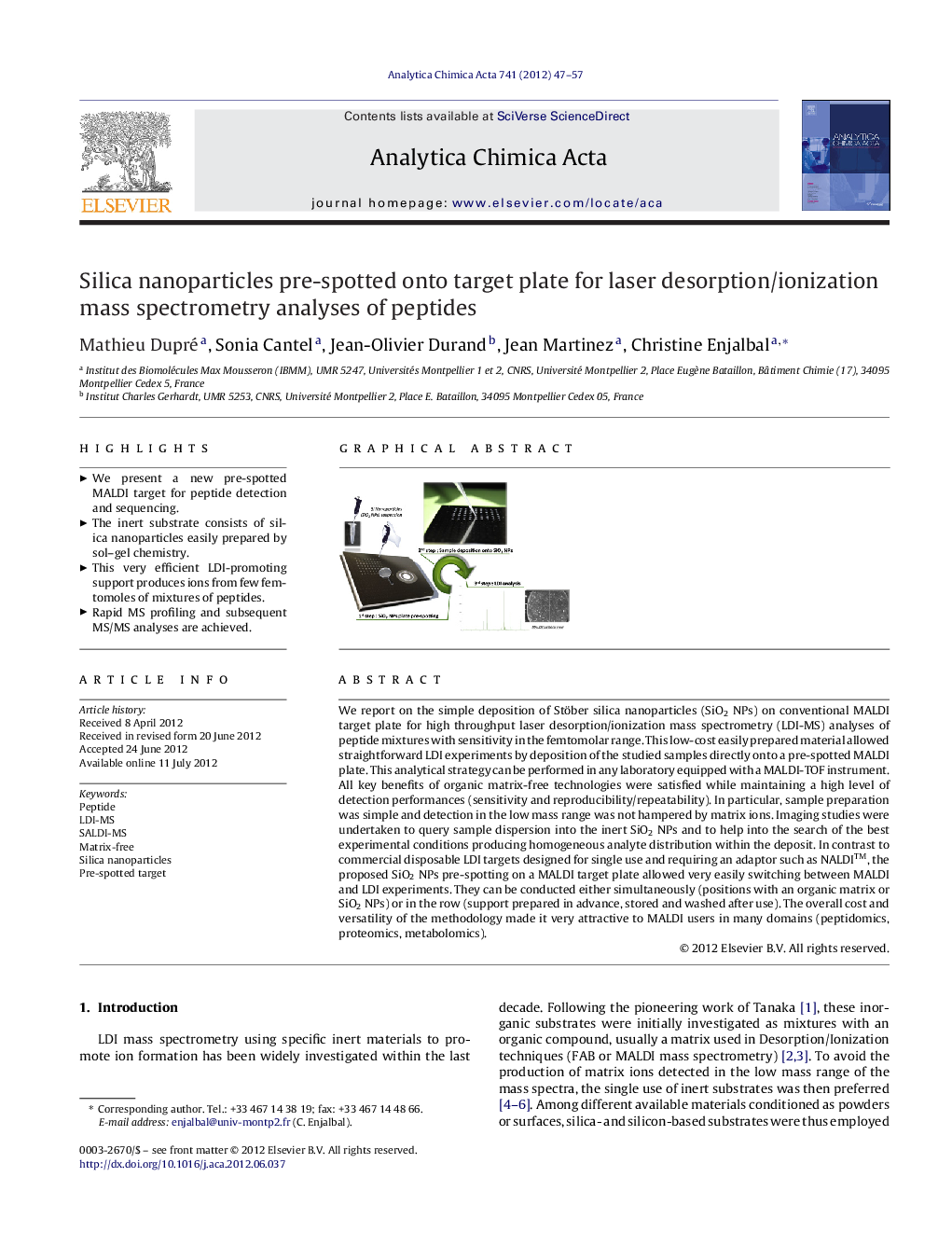| Article ID | Journal | Published Year | Pages | File Type |
|---|---|---|---|---|
| 1165905 | Analytica Chimica Acta | 2012 | 11 Pages |
We report on the simple deposition of Stöber silica nanoparticles (SiO2 NPs) on conventional MALDI target plate for high throughput laser desorption/ionization mass spectrometry (LDI-MS) analyses of peptide mixtures with sensitivity in the femtomolar range. This low-cost easily prepared material allowed straightforward LDI experiments by deposition of the studied samples directly onto a pre-spotted MALDI plate. This analytical strategy can be performed in any laboratory equipped with a MALDI-TOF instrument. All key benefits of organic matrix-free technologies were satisfied while maintaining a high level of detection performances (sensitivity and reproducibility/repeatability). In particular, sample preparation was simple and detection in the low mass range was not hampered by matrix ions. Imaging studies were undertaken to query sample dispersion into the inert SiO2 NPs and to help into the search of the best experimental conditions producing homogeneous analyte distribution within the deposit. In contrast to commercial disposable LDI targets designed for single use and requiring an adaptor such as NALDI™, the proposed SiO2 NPs pre-spotting on a MALDI target plate allowed very easily switching between MALDI and LDI experiments. They can be conducted either simultaneously (positions with an organic matrix or SiO2 NPs) or in the row (support prepared in advance, stored and washed after use). The overall cost and versatility of the methodology made it very attractive to MALDI users in many domains (peptidomics, proteomics, metabolomics).
Graphical abstractFigure optionsDownload full-size imageDownload as PowerPoint slideHighlights► We present a new pre-spotted MALDI target for peptide detection and sequencing. ► The inert substrate consists of silica nanoparticles easily prepared by sol–gel chemistry. ► This very efficient LDI-promoting support produces ions from few femtomoles of mixtures of peptides. ► Rapid MS profiling and subsequent MS/MS analyses are achieved.
